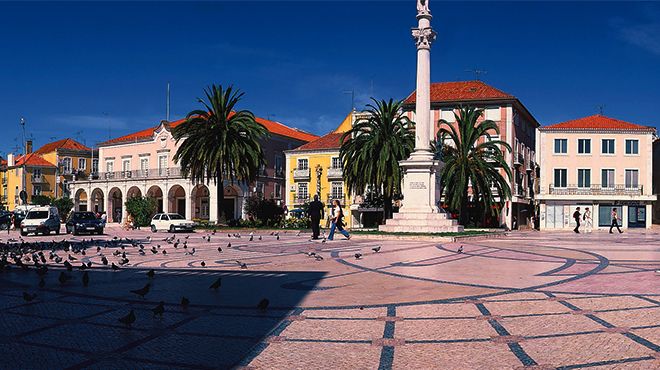Setúbal

Setúbal
Towns and Villages
Setúbal was inhabited in ancient times by the Phoenicians, and by the Romans who settled on the south bank of the River Sado (in Tróia, opposite the present town), who called it Cetobriga, from which the name Setúbal is derived.
It was the Romans who started one of the region's most traditional activities - gathering salt and preserving food in salting tanks whose remains still exist on the Tróia Peninsula.
The development of Setúbal has always been linked to the seafaring activities facilitated by its location at the mouth of the River Sado, and it was already one of the country's main ports in the 14th century.
Its agricultural produce is also important, some of which is mentioned in documents dating back to the 14th century, in particular grapes, wine, oranges and fish. The wines produced in the surrounding area are still famous today, especially table wines and the moscatel called Setúbal, which can be tasted in the cellars in nearby Azeitão, which also produces excellent cheeses and delicious tarts.
The city was the birthplace of outstanding Portuguese cultural figures, particularly Bocage (a 19th century poet, famous for the ironic tone and social criticism that he put into everything he wrote), and Luísa Todi (an important lyric singer). The Convent of Jesus, which houses the Municipal Museum, is in the Gothic-Manueline style, and the Fort of São Filipe, now converted into a "Pousada" (country-house hotel) from which one can enjoy a fantastic view of the city, the River Sado, Tróia and the Arrábida mountain range, also deserve special mention.
Around Setúbal there are nature conservation areas, in particular the Sado Estuary Nature Reserve, where it is still possible to watch dolphins in the wild, and the Arrábida Natural Park, which has unique characteristics and contains species that can only be found in areas near the Mediterranean.
There are also excellent beaches, especially Figueirinha, Galapos and Portinho da Arrábida (a magnificent sheltered bay), and on the other side of the River Sado, within easy reach by ferry, there is the Tróia peninsula with about 18 kms of beaches and a golf course.
It was the Romans who started one of the region's most traditional activities - gathering salt and preserving food in salting tanks whose remains still exist on the Tróia Peninsula.
The development of Setúbal has always been linked to the seafaring activities facilitated by its location at the mouth of the River Sado, and it was already one of the country's main ports in the 14th century.
Its agricultural produce is also important, some of which is mentioned in documents dating back to the 14th century, in particular grapes, wine, oranges and fish. The wines produced in the surrounding area are still famous today, especially table wines and the moscatel called Setúbal, which can be tasted in the cellars in nearby Azeitão, which also produces excellent cheeses and delicious tarts.
The city was the birthplace of outstanding Portuguese cultural figures, particularly Bocage (a 19th century poet, famous for the ironic tone and social criticism that he put into everything he wrote), and Luísa Todi (an important lyric singer). The Convent of Jesus, which houses the Municipal Museum, is in the Gothic-Manueline style, and the Fort of São Filipe, now converted into a "Pousada" (country-house hotel) from which one can enjoy a fantastic view of the city, the River Sado, Tróia and the Arrábida mountain range, also deserve special mention.
Around Setúbal there are nature conservation areas, in particular the Sado Estuary Nature Reserve, where it is still possible to watch dolphins in the wild, and the Arrábida Natural Park, which has unique characteristics and contains species that can only be found in areas near the Mediterranean.
There are also excellent beaches, especially Figueirinha, Galapos and Portinho da Arrábida (a magnificent sheltered bay), and on the other side of the River Sado, within easy reach by ferry, there is the Tróia peninsula with about 18 kms of beaches and a golf course.




 Explore
Explore 
 Remember and Share
Remember and Share 


